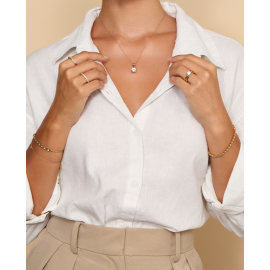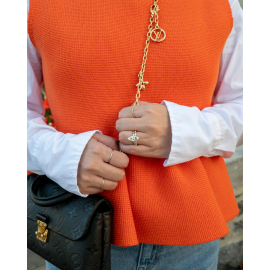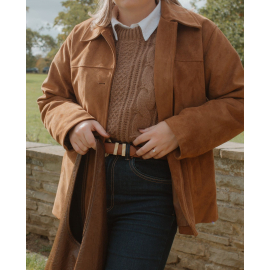Price match guarantee

We’ve teamed up with Klarna to provide flexible payment options, allowing you to shop the way you want. With Klarna, you can split your payment into 3 instalments or choose to pay later, making your shopping experience smoother and more convenient. Your order total must be between £100 and £499 to qualify.

We’ve teamed up with Klarna to provide flexible payment options, allowing you to shop the way you want. With Klarna, you can split your payment into 3 instalments or choose to pay later, making your shopping experience smoother and more convenient. Your order total must be between £100 and £499 to qualify.

September 08, 2023 | by James
It is law within the UK that every item of precious metal sold such as Platinum, Gold, Silver is stamped labelling the item with the type of metal it is. Platinum pieces which weigh less than 0.5 grams, 18ct Gold and Palladium pieces weighing less than 1.0 gram and Silver pieces weighing less than 7.78 grams are except from hallmark.
At Diamonds Factory all our products are hallmarked as per UK hallmarking law from London Assay Office (The GoldSmith Company)
The Goldsmiths' Company Assay Office is the oldest assay office in the United Kingdom. It has provided hallmarking services since The Goldsmiths' Company was founded in the 1300s. The company received its royal charter in 1327 and ranks 5th in order of precedence of the 12 Great Livery Companies of the City of London.
Hallmarking dates back to the 1300s when Edward I of England passed a law requiring any item made of silver, which was offered for sale, to be at least of equal quality as that of the coin of the realm (silver currency). The wardens of The Goldsmiths' Company were tasked with visiting workshops in the City of London to assay (test) silver articles. If these articles were found to be below standard they were originally destroyed and the metal forfeited to the King. If they passed, each article received the King's mark of authentication - the mark of a leopard's head. By 1478, there were several hundred workshops and merchants manufacturing silver articles in the City of London. It was not possible for the wardens to visit them all so the merchants were ordered to bring their items to Goldsmiths' Hall for testing and marking and a permanent Assay Office was established in the building. This is the origin of the term hallmark - struck with the King's mark at Goldsmiths' Hall.
In 1544 the Goldsmith's Company adopted the King's mark as their town mark and the mark of the leopard's head is now internationally recognised as the mark of this assay office.
The Goldsmiths's Company Assay Office is still based at Goldsmiths's Hall and remains the oldest company in Britain to be continually trading from the same site. However, it also has two satellite offices; at Greville Street in Hatton Garden in the heart of the London jewellery quarter and within a high security complex near London's Heathrow airport. It now has a new off-site facility within the Dalston-based jewellery manufacturer, Allied Gold. This is the first time in the Assay Office's 700 year history that it has opened permanent hallmarking services on a customer's premises.
In addition to hallmarking, the office has now expanded its range of services to support the jewellery trade and enforcement authorities. It offers a variety of specialist analytical services including nickel, lead & cadmium testing, antique silver dating, non-destructive compositional analysis, plating thickness measurement and a melt and assay service for scrap precious metal carried out in their fully independent on-site laboratory. Other services offered are a jewellery valuation service, laser marking, trading standards assistance, high quality photography and a comprehensive range of training and educational seminars, lectures and specialist events.






Symbolising rich and vibrant love with its enchanting red hues, the ruby is an increasingly popular choice amongst our customers for an engagement ring or special jewellery piece – and it’s not hard to see why when looking at its intense red glow and fascinating exterior. Looking back at the incredible history behind the ruby, we take a deep dive into the reasons why this striking red stone is on the rise and quickly becoming one of the globes most coveted gemstones.
4 Prong Setting Gemstone Designer Stud Earrings
From £1,816
4 Prong Ruby Half Eternity Ring
From £703
4 Prong Round Ruby Diamond Engagement Ring
From £476
4 Prong Emerald Shaped Ruby Engagement Ring
From £469
4 Prong Setting Half Eternity Ruby Ring
From £205
4 Prong Setting Half Eternity Ruby Ring
From £558
4 Prong Setting Half Eternity Ruby Ring
From £240
4 Prong Setting Half Eternity Ruby Ring
From £391
3 Prong Round Ruby Stud Earring
From £457
4 Prong Ruby Solitaire Pendant
From £271
4 Prong Ruby Solitaire Pendant
From £371
4 Prong Setting Halo Ruby Earring
From £918
2 Prong Setting Round Ruby Tennis Bracelet
From £1,822
4 Prong Setting Oval Ruby Tennis Bracelet
From £2,843
3 Prong Setting Pear Ruby Halo Earring
From £211
3 Prong Setting Pear Halo Ruby Pendant
From £166
4 Prong Setting Oval Halo Ruby Pendant
From £196
4 Prong Setting Oval Ruby Pendent
From £549
2 Prong Setting Ruby Drop Earrings
From £1,150
4 Prong Setting Round Ruby Tennis Bracelet
From £1,874
4 Prong Setting Round Ruby Everyday Bracelet
From £567
What are rubies?
Often known as the ‘King of the Gems’ rubies are one of the worlds four precious stones amongst diamonds, emeralds and sapphires. Like most gemstones, rubies are formed from extremely high heat and pressure that happens below the earth. The cooling process of hot magna forms crystals, and these crystals form into gemstones when mixed with the presence of other metals - in the case of rubies, Chromium, which creates its vivid red hue. The intensity of the colour is all dependant on how much Chromium is present in its chemical make-up, with rubies varying from blood red to light pink and sometimes even purple too.
Where do Rubies come from?
The history of the Ruby is certainly an interesting one with the first rubies said to be discovered over 2500 years ago in the heart of Sri Lanka – which still to this day stands to be the location of some of the world’s finest rubies in the world. Another country often associated with some of the oldest rubies is Burma, now known as Myanmar and more commonly known as where the infamous Burmese Rubies come from. In modern day rubies can be found in many places all around the globe, with mine locations in Kenya, America, Thailand, Tanzania and Pakistan just to note a few.
Has Ruby jewellery always been popular?
In short answer, yes, rubies have been popular dating back to as early as 2500 B.C. In ancient times, once mined the greatest and most eye-catching of rubies would be taken straight to the ruler of Burma, where these would become his precious property. This theme ran through for decades and decades to come, with a particularly memorable ruby jewellery piece belonging to the crown and worn by the late Queen Elizabeth II – the famous Burmese Ruby Tiara that was designed in 1973.
Recognised by its captivating bright red colour, there are many reasons behind why rubies have become one of the world’s most desired gemstones. Ranking a whopping 9 on the Mohs scale, rubies also boast incredible durability coming in at 2nd spot after diamonds. Keeping in theme with their symbolism of unbreakable and everlasting love, rubies have only gained more and more popularity over the years and still to this day remain one of the globes rarest of stones.
What Celebrities Wear Ruby Engagement Rings?
There are various celebrities who’ve chosen a ruby as their desired stone in their engagement ring, and it comes to no surprise as why when rubies are said to symbolise power, wealth and protection. From pop sensations Katy Perry and Jessica Simpson to Desperate Housewives actress Eva Longoria and our very own Duchess of York, rubies are a unique pick for an engagement ring that are sure to catch the attention of anyone’s eye it falls upon.